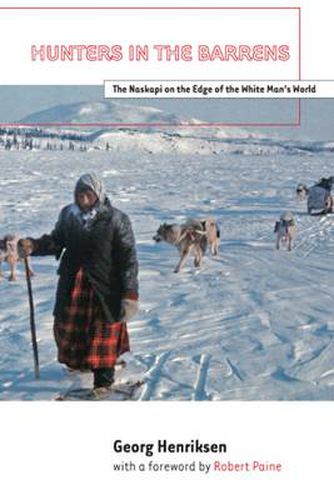Readings Newsletter
Become a Readings Member to make your shopping experience even easier.
Sign in or sign up for free!
You’re not far away from qualifying for FREE standard shipping within Australia
You’ve qualified for FREE standard shipping within Australia
The cart is loading…






This title is printed to order. This book may have been self-published. If so, we cannot guarantee the quality of the content. In the main most books will have gone through the editing process however some may not. We therefore suggest that you be aware of this before ordering this book. If in doubt check either the author or publisher’s details as we are unable to accept any returns unless they are faulty. Please contact us if you have any questions.
This comprehensive study of the Naskapi Indians of Labrador is based on an anthropologist’s life with them between 1966 and 1968, when families still followed the traditional pattern of hunting on the barrens during the winter and returning to their costal settlements in the summer. Now the Naskapi live in coastal settlements; no longer in possession of their own culture, they have become sedentaries under white tutelage. This description of two antithetical worlds provides valuable insights for anyone interested in contemporary native rights issues.
$9.00 standard shipping within Australia
FREE standard shipping within Australia for orders over $100.00
Express & International shipping calculated at checkout
This title is printed to order. This book may have been self-published. If so, we cannot guarantee the quality of the content. In the main most books will have gone through the editing process however some may not. We therefore suggest that you be aware of this before ordering this book. If in doubt check either the author or publisher’s details as we are unable to accept any returns unless they are faulty. Please contact us if you have any questions.
This comprehensive study of the Naskapi Indians of Labrador is based on an anthropologist’s life with them between 1966 and 1968, when families still followed the traditional pattern of hunting on the barrens during the winter and returning to their costal settlements in the summer. Now the Naskapi live in coastal settlements; no longer in possession of their own culture, they have become sedentaries under white tutelage. This description of two antithetical worlds provides valuable insights for anyone interested in contemporary native rights issues.